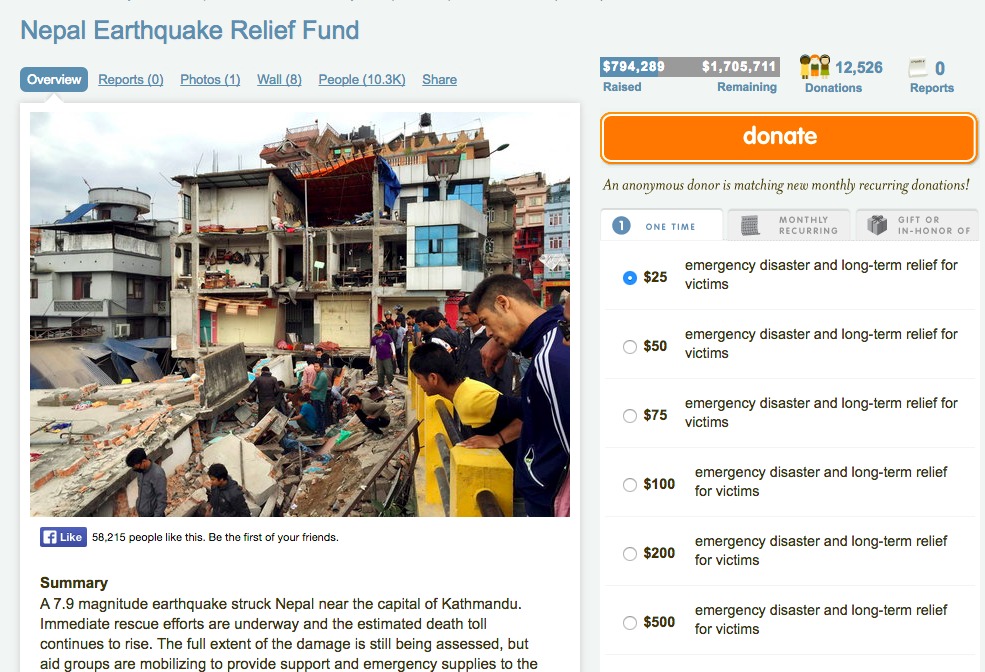The post Honesty Oscars: Best Activist in a Leading Role appeared first on Socialbrite.
]]>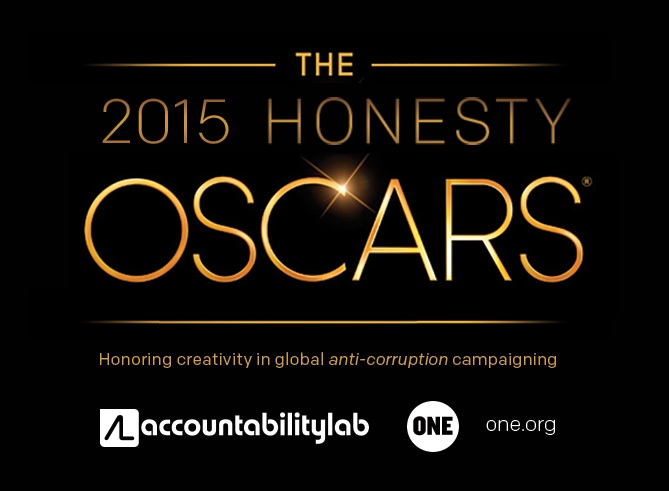
By Danielle Daley
My friends over at the Accountability Lab and the ONE campaign are hosting the Honesty Oscars. Every day in the week leading up to the Academy Awards, February 17th to 21st, ONE and Accountability Lab will unveil a category for the Honesty Oscars 2015, an award that honors not Hollywood films, but the creative work of activists and organizations that fight global corruption. Vote for your favorites, and they’ll announce the winners following the Oscars on Monday, February 23rd.
We think it’s great that they’ve hijacked the Oscars in the friendliest and most humanitarian way possible by shining the spotlight on the people and projects that rarely get it.
Please go cast your vote here and consider yourselves a member of the Honesty Oscars Academy!
 This work is licensed under a Creative Commons Attribution 3.0 Unported.
This work is licensed under a Creative Commons Attribution 3.0 Unported.
The post Honesty Oscars: Best Activist in a Leading Role appeared first on Socialbrite.
]]>The post Nonprofit Case Study: Periscope for Nonprofits appeared first on Socialbrite.
]]>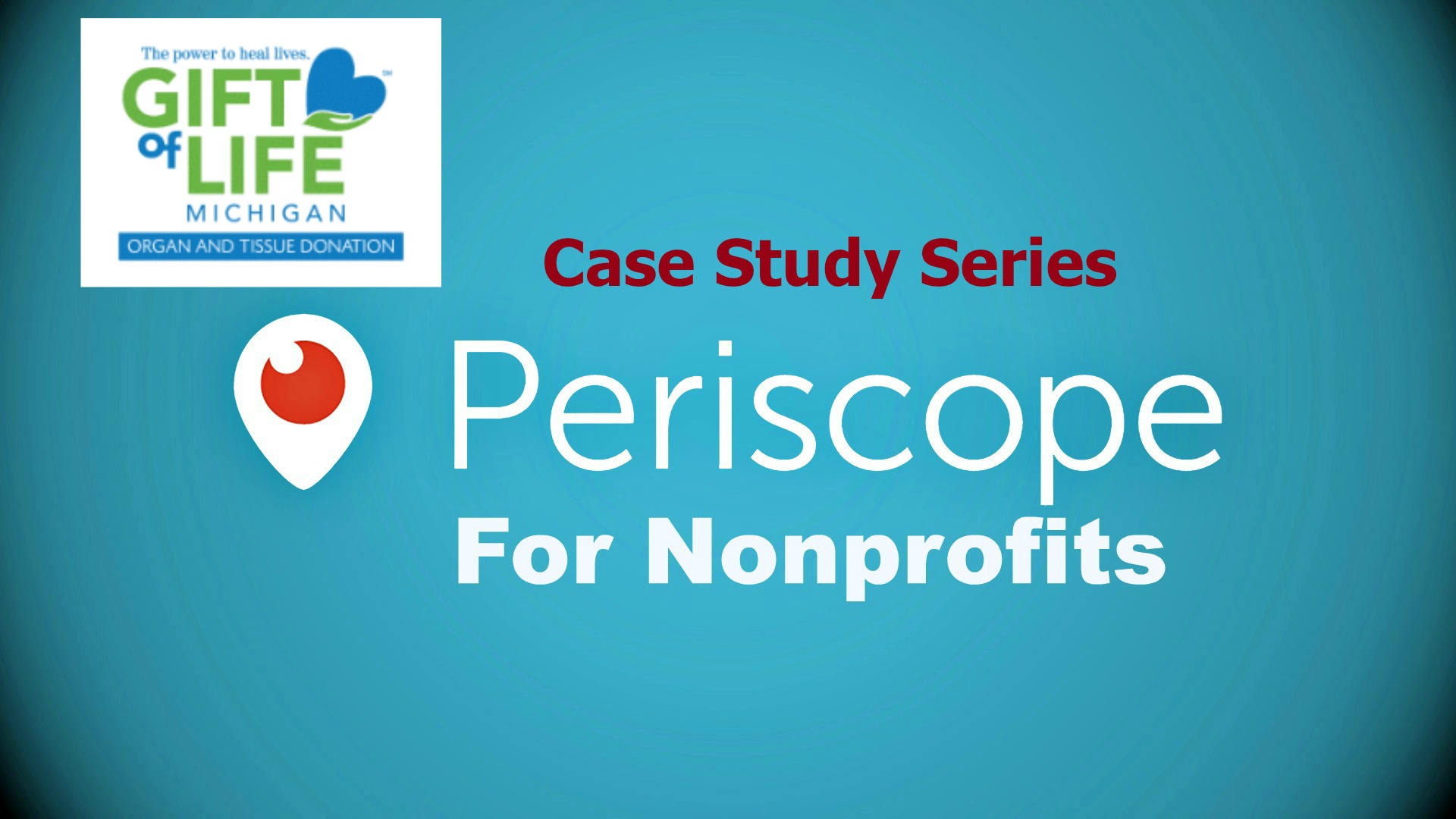
 As a follow-up to my Periscope for Nonprofits Quick Guide, I wanted to focus on real Nonprofit Periscopers, and how they’re using this new tool for social good.
As a follow-up to my Periscope for Nonprofits Quick Guide, I wanted to focus on real Nonprofit Periscopers, and how they’re using this new tool for social good.
Today, I’m featuring Jennifer Tislerics, the Special Events & Partnerships Coordinator for Gift of Life Michigan. Gift of Life Michigan coordinates organ and tissue donations from deceased donors for the state. Jennifer also handles social media, youth outreach, faith-based programs, workplace outreach, and more.
As a refresher, Periscope is a three month-old, free mobile app that allows any user to live stream from wherever they are. Jennifer bravely responded to our call out for ‘Nonprofit Periscopers’ and she had a lot of great advice to offer in our Q & A.
1) What made you want to try out Periscope? Was it a strategic move as part of a larger social strategy, or did you want to experiment with the app first to see if it would work for your nonprofit?
 I saw the Michigan Secretary of State staff using Periscope at a press conference during National Donate Life Month in April. (In Michigan our Secretary of State oversees the DMV, and helps coordinate the state’s organ donor registry.) It seemed like an easy way to engage a broader audience in an event. I watched a few other broadcasts on the iPad and was intrigued by the possibilities to engage distant supporters in real-time. I decided to experiment with it a bit, to see how it might benefit our organization and cause.
I saw the Michigan Secretary of State staff using Periscope at a press conference during National Donate Life Month in April. (In Michigan our Secretary of State oversees the DMV, and helps coordinate the state’s organ donor registry.) It seemed like an easy way to engage a broader audience in an event. I watched a few other broadcasts on the iPad and was intrigued by the possibilities to engage distant supporters in real-time. I decided to experiment with it a bit, to see how it might benefit our organization and cause.
2) What event did you use Periscope for?
In late April I used Periscope at a kick-off breakfast event for an annual walk/run event. I plan to use it again at the actual walk/run in late July.
3) What was the experience like? Did you get good feedback from users? Take us through your steps.
It was a rough start, actually. One of the biggest lessons I learned is to use a tripod and get up close to the action – do not carry the iPad around or video from the back of the room. At least not at a seated event – I will probably move around some at the walk/run event. I accidentally stopped the video early (bad finger placement holding the iPad), so had to start fresh with a new video, which our Twitter followers may not have found. Actually, I did a few shorter-than-intended videos. The ones with the most audience traffic had short but interesting titles, which made our video stand out from the crowd.
4) What was engagement like?
Not nearly as many people watched the videos as I had hoped, but it was early on a work-day morning. It was fun to see people in the real-life audience following on Periscope, too, and sending us hearts and positive comments!
5) What did you learn? Any tips to share?
Practice first! Practice on-site. Make sure you’ve got a solid internet connection. Use a tripod. Prepare a few people to talk to you on video beforehand. Promote it in advance so people know to follow you on Twitter to get the link (and any new links you may create after accidentally cutting the video short).
6) What worked and what didn’t? What would you like to see improved?
I wish we could “add on” or continue a previous video, rather than having to create a new one if we accidentally stop the first video. It’s tough typing in a new title in a hurry, trying to rush and get online again. In general, I think Periscope viewers prefer interactive videos rather than “broadcasts” of speeches, although when we video’d a Michigan Supreme Court Justice speaking that got some audience attention!
7) Would you use Periscope again?
Definitely! I plan to at our walk/run on July 25 in Detroit.
8) Did you download the broadcast?
No, I didn’t feel I got a high enough quality video to make that worthwhile. This time.
9) Do you see yourself adding it to your social media strategy?
Yes, if these first few experiences prove successful, or at least promising, we will incorporate it into our strategy.
10) Anything else you want to tell me that I didn’t ask?
Follow @giftoflifemich on Twitter the morning of Saturday, July 25 to get links to our Periscope video(s) and send me feedback! I’m always open to suggestions for improvement.
We will definitely do that, Jennifer, and we’ll send you tons of Periscope hearts for all the great work you are doing at Gift of Life Michigan! Thank you for sharing your Periscope experience with us.

Photo courtesy of Gift of Life Michigan
PS – I will be featuring nonprofits and NGOs using Periscope on this blog, so please let me know in the comments below of any npos you know that are using Periscope to engage their supporters.
 This work is licensed under a Creative Commons Attribution 3.0 Unported.
This work is licensed under a Creative Commons Attribution 3.0 Unported.
The post Nonprofit Case Study: Periscope for Nonprofits appeared first on Socialbrite.
]]>The post How social media platforms are responding to the Nepal earthquake, and how you can help appeared first on Socialbrite.
]]>

By Caroline Avakian / Photo above courtesy of Facebook
It was just a few hours after I found out about the devastating Nepal earthquake that I noticed an alert on my Facebook feed that I hadn’t seen before. My colleague who works in Nepal had been marked “Safe” in Facebook’s new “Safety Check” feature, that instantly let me know how many of my Facebook friends were in the “affected area”, how many had been “marked safe”, and also allowed me to mark myself safe in the event I was in the “affected area”.
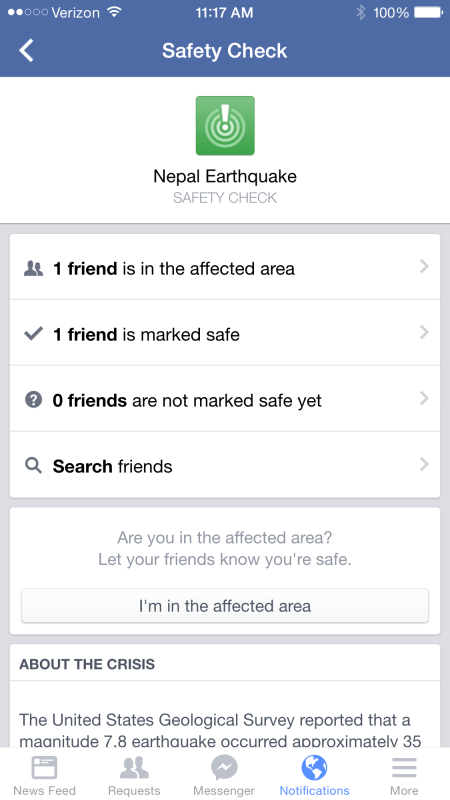
The Safety Check feature was quickly followed up by a “Donate” feature, so if you log into Facebook today, you’ll notice a message at the top of your news feed that lets you donate to International Medical Corps, a humanitarian organization Facebook has partnered with to provide emergency aid. Facebook is also providing matching funds of up to two million to provide immediate and ongoing relief. The IMCs emergency response teams are operating mobile medical units in Nepal, India and Bangladesh, to deliver critically needed medical care and medicines to the regions hardest-hit by the earthquake. They’re distributing hygiene kits, water purification tablets and other supplies to the most devastated areas.
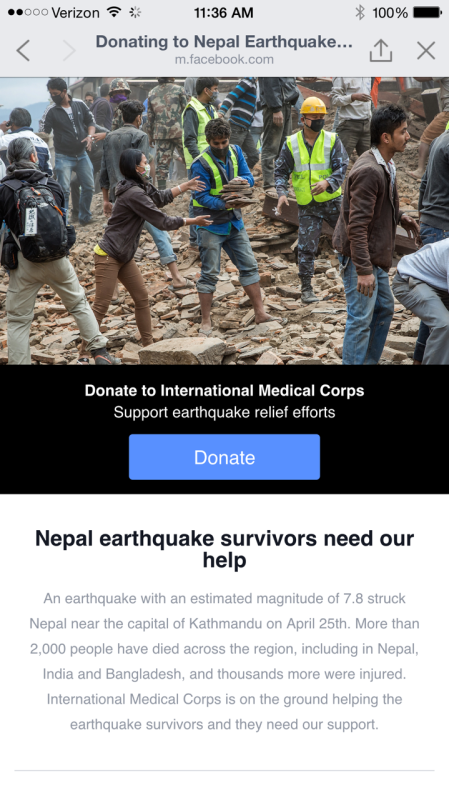
Additionally,Twitter is helping to raise funds through UNICEF and Apple is asking iTunes users to donate money to the American Red Cross via its iTunes store. The appeal from Apple allows donations from $5 to $200, with 100% of the funds donated being passed anonymously to the Red Cross.
Similarly to Facebook, Google is now providing satellite imagery to aid in the recovery, and has launched a Person Finder to help people know whether or not people are safe who might have been in the earthquake affected areas.

The Person Finder tool is an online database that collates information from emergency responders, and allows individuals to post details about people who have been missing or are found. Additionally, Google.org is donating one million to the emergency response efforts and a gift-matching option will soon be available.
WHAT YOU CAN DO
The organizations linked above are all doing excellent work in the affected regions, and for those of you who are interested in donating to locally-based organizations, Global Giving (seen in photo above), has compiled a vetted list of community-based organizations that are in the best position to provide long-term support for disaster victims. By funding the relief efforts of local organizations, donations to the Global Giving fund have the potential to build stronger disaster-response capacity, so that these organizations are better equipped to face future disasters. GlobalGiving promises to post reports about how funds have been used and will email these reports to donors and subscribers. A wonderful giving choice if you haven’t made a donation yet. Just click the photo above to go straight to that donate page.
 This work is licensed under a Creative Commons Attribution 3.0 Unported.
This work is licensed under a Creative Commons Attribution 3.0 Unported.
The post How social media platforms are responding to the Nepal earthquake, and how you can help appeared first on Socialbrite.
]]>The post 3 ways Milaap is changing the face of giving appeared first on Socialbrite.
]]>Milaap creates sustainability by blending crowdfunding and micro lending
Target audience: Nonprofits, cause organizations, foundations, NGOs, social enterprises, educators, journalists, general public.
 Icould begin this post by regurgitating any number of statistics on the sensory and information overload we all experience these days, but I won’t. We all know that that’s the world we live in. Technology has really broken down barriers to information and while that’s mostly a good thing, it can be really overwhelming as well.
Icould begin this post by regurgitating any number of statistics on the sensory and information overload we all experience these days, but I won’t. We all know that that’s the world we live in. Technology has really broken down barriers to information and while that’s mostly a good thing, it can be really overwhelming as well.
As a result, breaking through the digital clutter these days is tough. So what do you do when your cause depends on you doing just that? How do you make sustainable giving a reality, so that both your cause and supporters benefit?
Milaap (disclosure: my client) is a unique online platform that blends crowdfunding with micro lending, giving people from around the world the ability to both lend and/or create personal fundraisers for India’s working poor. These micro loans – which start as low as $25 and are repaid in full at the end of the loan term – fund projects in fields as diverse as energy, water, and education. To date, Milaap has a 98% repayment rate, which is quite remarkable.
Here are three ways Milaap is socializing and changing the face of giving:
- Anyone who gives through Milaap can set up a fundraiser for a project they are touched by. But here’s where it gets interesting; you can make these fundraisers social. In other words, you can bring your community in, asking them to join you in lending to this specific project, telling them why. So, all of a sudden, you don’t just have one person fundraising, you have 3, or 6, or 19… the possibilities are endless! Takeaway: Many hands do make light work. When you encourage people to involve their communities, you grow your own at the same time. This is what has enabled Milaap, over the last four years, to raise $1.6 million, give out almost 13,000 loans and take close to 50,000 people from oppression to opportunity.
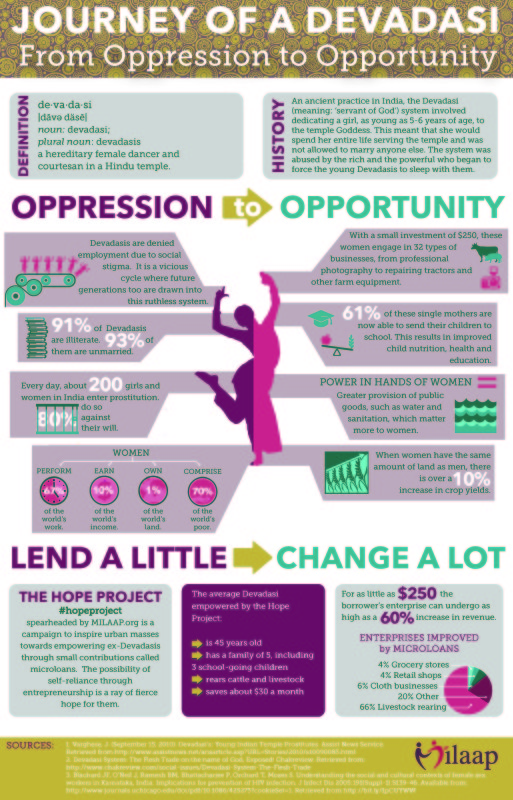
- What I really like about giving through Milaap is that the money you give is a loan—not a donation. While this in no way negates making donations to nonprofits, I think it’s a really smart approach. With the immense donor fatigue we all experience, it’s refreshing to know you will get your money back once the loan matures (unless you choose to relend it, of course, which many people do). As a small business owner myself, I love that approach, as there is accountability built into the process. Takeaway: Elevate your supporters’ investment of time and energy in your cause. Showing them the end-recipients are equally invested is a great way to do so.
- The best way to touch someone’s heart is by telling them a story. And Milaap has great stories to tell—of its borrowers, of its supporters, of its employees and partners. It has a really rich content bank, especially of visual assets. But what it does very well is let its borrowers stories speak for themselves. I defy anyone to not be moved by the video above we put together for its flagship campaign in 2014, the #HopeProject. Takeaway: Stories work best when they come straight from the source. As much as possible, let those in your stories tell them.
Today is Milaap’s fourth birthday. To celebrate, it is hosting a round-the-clock, global online conversation on sustainable giving, and I do hope you’ll join. Here’s more on today’s #Milaap4Hope event (it’s very easy to join, just log onto the respective platform based on which event catches your fancy, and follow/use that hashtag).
If we all do our part, we can change the face of giving.
 This work is licensed under a Creative Commons Attribution 3.0 Unported.
This work is licensed under a Creative Commons Attribution 3.0 Unported.
The post 3 ways Milaap is changing the face of giving appeared first on Socialbrite.
]]>The post 8 tools to help you fundraise for a cause appeared first on Socialbrite.
]]>
Photo by Victor1558 on Flickr (Creative Commons)
YouCaring, GoFundMe, other sites help individuals raise money for personal causes & nonprofits
Target audience: Nonprofits, NGOs, cause organizations, social enterprises, businesses, bloggers, social media managers, individuals.
By Lindsay Oberst
Socialbrite staff

After Superstorm Sandy hit in October 2012, individuals created campaigns and inspired people to donate money using online fundraising tools (including the ones mentioned in this article). These people raised millions of dollars and made many people’s lives a little bit easier.
This type of crowdfunding may not be new, but in increasing numbers, people around the world are creating all kinds of campaigns — for creative projects, technology, nonprofits and much more.
Individual fundraising, which we’ll examine in this article, means money raised from individuals. Two types exist:
- Individuals raising money for nonprofits
- Individuals raising money for a personal cause
If you work with a nonprofit, you might also want to check out our top five social fundraising tools, which help organizations raise more money by making the process social. The following tools all have social sharing capabilities as well.
Websites for fundraising as an individual
You want to raise money — say, medical expenses for a loved one, tuition costs for someone around the globe — but chances are you’re not sure how to go about doing it.
While you could use PayPal to raise money by integrating it into a website or through email — and many of the following sites rely on PayPal for donations — these eight tools will give you a more attractive and more engaging platform; one that has a better chance of raising the money and awareness you need.
YouCaring (for personal causes)
1YouCaring is a free fundraising website created specifically for individuals wanting to raise funds for personal causes. More than 16,000 fundraisers have been held to date. Most tools charge some type of fee, but not this one. The site is supported entirely by donors.
How do they achieve this? When people donate to a fundraiser, they have an option to donate a percentage of their total to YouCaring. The only money taken out (about 2.9 percent of the total plus 30 cents) will be from credit card processors PayPal and WePay (expected to be available this month). Money is sent instantly (in most cases) to the fundraiser’s account as soon as it’s donated, so you won’t have to wait until the end of the campaign to get your money.
For campaigns, the site has seven categories: medical expenses, memorials and funerals, tuition assistance, adoption fundraising, funding for mission trips, helping a neighbor and more.
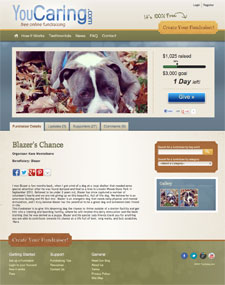 Benefits:
Benefits:
- It’s free.
- You get donations instantly.
- A thank-you message (personalized by you) is automatically sent to your donors.
- Pictures and videos (only from YouTube currently) can be added to pages.
- Good social integration: Facebook, Twitter, Google Plus, Pinterest and email.
- Allows anyone to comment on the page.
- Page creator can make updates.
- Campaigns are promoted to the front page. Also, projects are promoted through Twitter and on their Facebook page.
- Offers fundraising tips and a blog.
- The site is secure: All donations are processed using Secure Socket Layer encryption, or SSL.
Downsides:
- No way to embed a widget on another site.
- Pages have a big YouCaring banner at the top.
GiveForward (for personal causes)
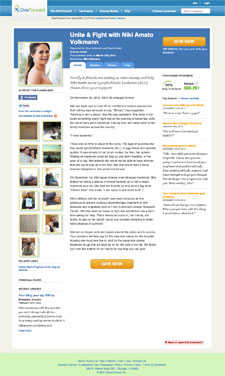 2GiveForward provides online fundraising pages for free. Their website says they are the No. 1 platform for medical fundraisers. Other options for pages include pet medical and funeral/memorial.
2GiveForward provides online fundraising pages for free. Their website says they are the No. 1 platform for medical fundraisers. Other options for pages include pet medical and funeral/memorial.
Desiree Vargas Wrigley and Ethan Austin created the site in early 2008 to allow anyone to raise money for anything. They have had more than 25,000 individual fundraisers published on their site and have helped people raise more than $27 million.
A fundraising page is free to create, and at the end of the fundraiser, GiveForward deducts 7 percent for processing fees. However, donors now have the option to cover the processing fee for their individual contribution. Also, PayPal deducts 2.9 percent of the total plus 30 cents. Creators get the money when the fundraiser reaches its end date, and the maximum time for fundraisers is four months.
Benefits:
- Users get their own personal fundraising coach, who will helps users reach their goals and answers any questions they may have.
- Photos and videos can be added to pages.
- Anyone can grab a widget to help promote the fundraiser.
- Anyone can send “hugs” or comments.
- Anyone can get updates on the project using RSS.
- You get your money, even if the goal is not reached.
- The site offers fundraising tips on its blog.
- The site is secure: They use 128-bit SSL encryption.
- You can make your page private if you wish, meaning that it won’t show up in Google.
Downsides:
- The fundraising goal and amount raised is generally small.
- The overall design of the page is a little cluttered.
- Social integration is adequate: Only Facebook and Twitter are included on the pages.
GoFundMe (for personal causes and for charity)
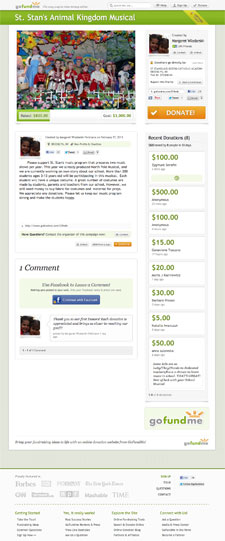 3GoFundMe is an online fundraising service that allows regular people to create personal donation websites and to raise money for charity. Some nonprofits also use the site. (Note: If you work for a nonprofit, it might be a good idea to get listed in the GoFundMe charity directory by contacting the site.)
3GoFundMe is an online fundraising service that allows regular people to create personal donation websites and to raise money for charity. Some nonprofits also use the site. (Note: If you work for a nonprofit, it might be a good idea to get listed in the GoFundMe charity directory by contacting the site.)
Its website says it’s the most popular website for personal causes, and that it grew more than 500 percent from 2011 to 2012 (it launched in 2010). FastCo.Exist says its the third most successful crowdfunding platform after Kickstarter and Indiegogo.
Users can select one of three types of campaigns:
- Personal donation campaigns. These type of projects receive money immediately after it’s donated, and there are no time limits or collection requirements.
- Charity fundraising campaigns. Money raised for charity is sent to the selected charity on a monthly basis. All donations are sent via check.
- All or nothing campaigns. Supporters are only charged if you reach your funding goal.
Creating a page is free, but GoFundMe deducts a 5 percent fee from each donation you receive. Also, the site partners with FirstGiving, which deducts a 4.25 percent fee to process and deliver all donation payments to charities. Or for individuals, a 2.9 percent plus 30 cent fee per transaction is deducted by WePay or PayPal.
Benefits:
- Users can choose different colors for pages.
- The fundraising page does have a GoFundMe banner at the top, but it is small.
- The home page shows recent donations, which might encourage others to check out and donate to campaigns.
- The site promotes campaigns on its blog and social media.
- Offers a customizable widget and badge that anyone can embed on a website or blog.
- Good social integration: Facebook, Twitter, Pinterest, Reddit and email.
- Creator can post updates, and each update has a donate button on the bottom of it.
- Each page has a printable sign, which anyone can use to help raise awareness and money.
- GoFundMe tries to answer all emails within five minutes.
- To protect donors and prevent misuse, a member of the GoFundMe team checks that the campaign creator has a valid Facebook account connected to their page, the page has a photo or video and the page has raised at least $100 in donations. After this, the page will be listed in the search directory.
- An email is sent to you each time someone donates to the page.
- People can set up recurring, monthly donations.
- The site is secure: They use SSL processing.
Downsides:
- Must have a Facebook account to show up in the site’s search.
- People must use Facebook to make comments on the page.
- Most of the messages explaining what the campaign is about get shortened, and people must click the more button to keep reading.
Fundraise.com (for personal causes and for charities)
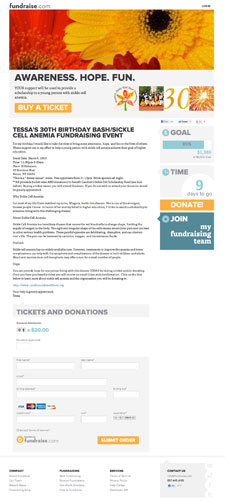 4Fundraise.com is a social fundraising platform founded in 2011 for raising money for personal causes or for raising funds for nonprofits or other organizations. The site also offers pages and support for events, including ticket sales, donations and Salesforce integration.
4Fundraise.com is a social fundraising platform founded in 2011 for raising money for personal causes or for raising funds for nonprofits or other organizations. The site also offers pages and support for events, including ticket sales, donations and Salesforce integration.
Users can choose to receive their donations on a monthly basis or in one lump sum at the end of the campaign. Money is sent by check or by electronic fund transfer to the user’s bank account. A page is free to create, but a 4.5 percent fee plus credit-card processing costs are charged to each donation.
Benefits:
- Good, clean design of the campaign pages, with large, horizontal images.
- Photos and videos can be added to pages.
- The tour of the pages’ features is helpful and well designed.
- The pages do have a Fundraise.com banner at the top, but it is very small.
- Multiple donate buttons.
- Good social integration: Facebook, Twitter and Google Plus.
- Users get a dashboard with analytics to see how their campaign is doing.
- Offers an email center, allowing users to send thank-you messages and reach out to hundreds of donors at the same time.
- Offers users a one-line code to embed the donate form on a website.
- The site promotes some campaigns on its blog. They also feature campaigns on their homepage and show recent fundraising activity on the homepage, too.
- Pages are mobile-optimized, and users have access to a free iPhone app.
- Donors can choose from $25, $50, $100 or another amount.
- Allows people to make recurring donations.
- The site is secure: They use 128-bit SSL encryption.
Downsides:
- Pages don’t have a place for campaign updates.
- People can’t comment on the pages.
- People can only donate with a credit card or debit card, not using PayPal.
Razoo (for charity)
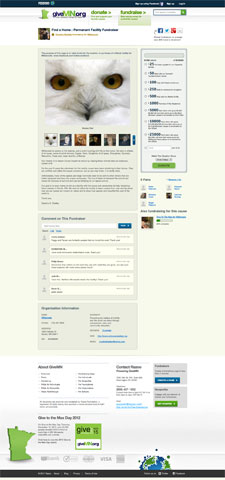 5Many nonprofits use Razoo to raise money, but individuals can also create fundraising pages to raise money for nonprofits. Nearly one million officially vetted nonprofits are registered on the site. More than 300,000 people have used the site to support their favorite causes.
5Many nonprofits use Razoo to raise money, but individuals can also create fundraising pages to raise money for nonprofits. Nearly one million officially vetted nonprofits are registered on the site. More than 300,000 people have used the site to support their favorite causes.
Pages are free to create, but the Razoo Foundation, a nonprofit itself, deducts 2.9 percent, or 4.9 percent after April 1, 2013. Funds are given to the nonprofits once a month.
Benefits:
- Photos and videos can be added to pages.
- Recurring and anonymous donations available.
- Good social integration: Facebook, Twitter, Google Plus and email.
- Small Razoo banner on the top of all pages.
- A free iPhone app is available.
- A Facebook widget allows you to embed the fundraiser on a Facebook page.
- Has an embed code for putting a widget on your blog or website.
- The homepage features campaigns and shows recent donations.
- Anyone can leave comments on a page.
- Pages are mobile optimized.
- All donations are tax deductible, and donors instantly receive a tax-deductible receipt.
- The site is secure: They use SSL encryption.
Downsides:
- Online donations must be at least $10.
- Can only donate with a credit or debit card, not using PayPal.
- The goal and amount raised on the pages are small.
FirstGiving (for charity)
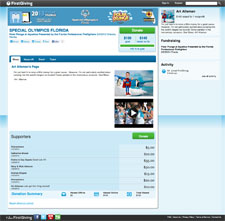 6FirstGiving allows nonprofits and individuals to create fundraising pages. The website has been around for 10 years, and more than 8,000 nonprofits have used it to raise more than $1 billion.
6FirstGiving allows nonprofits and individuals to create fundraising pages. The website has been around for 10 years, and more than 8,000 nonprofits have used it to raise more than $1 billion.
Pages are free to create, but FirstGiving deducts 7.5 percent service fee from all online donations. Also, donors have the option to pay this fee so that all money reaches the nonprofit.
Benefits:
- Photos and videos can be added to pages.
- An embeddable widget is available to put on a website or blog.
- Good social integration: Facebook, Twitter, LinkedIn and email.
- Offers fundraising tips and a blog.
- A few causes are featured on the homepage.
- Site is secure: They have 256-bit SSL security.
Downsides:
- Design is a little cluttered and not as good as some of the other tools.
- Only donors can make comments on pages.
- Can only donate with a credit or debit card, not using PayPal.
- No recurring donations.
Crowdrise (for charity)
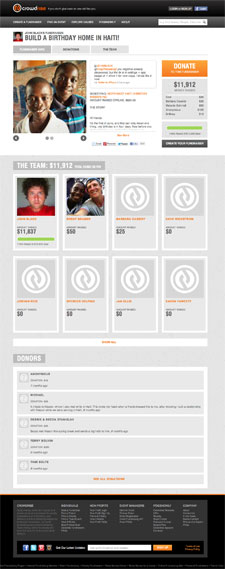 7Crowdrise provides online fundraising websites for individuals, nonprofits and event fundraising. People can create fundraising pages for their favorite causes.
7Crowdrise provides online fundraising websites for individuals, nonprofits and event fundraising. People can create fundraising pages for their favorite causes.
Charities choose from among three plans:
- Basic. With this free plan, Crowdrise deducts a 5 percent fee plus a $1 fee on donations under $25 and a $2.50 fee on donations above $25.
- Featured. This plan costs $49 a month or $490 a year, and Crowdrise deducts a 4.95 percent fee plus $1 per donation.
- Royale. This plan costs $199 a month or $1,990 a year, and Crowdrise deducts a 4.95 percent fee and no transaction fee per donation. This plan also get custom, branded pages.
To get their money, charities can choose to receive a lump sum check every 30 days or they can receive each donation in real-time.
Benefits:
- Photos and videos can be added to pages.
- Good social integration: Facebook, Twitter, Pinterest and email.
- Visible “Donate” button and amount raised.
- Pages do have a Crowdrise banner at the top, but it’s small.
- Donations are tax deductible, and donors automatically receive email receipts.
- Users get Crowdrise Impact Points for raising money, donating to causes and getting votes.
- The site is secure: They use SSL processing.
Downsides:
- Online donations must be at least $10.
- No recurring donations.
- Only donors can make comments on pages.
- Crowdrise doesn’t promote causes very much.
IndieGoGo (for personal causes)
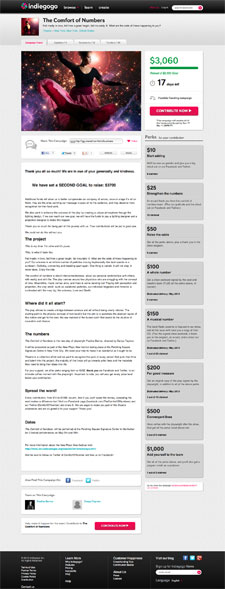 8IndieGoGo allows individuals and nonprofits to create fundraising pages. The site started out for creative projects only, but now it has expanded to causes and entrepreneurial projects as well. (Its chief competitor, Kickstarter, is still strictly for projects, not charitable causes.)
8IndieGoGo allows individuals and nonprofits to create fundraising pages. The site started out for creative projects only, but now it has expanded to causes and entrepreneurial projects as well. (Its chief competitor, Kickstarter, is still strictly for projects, not charitable causes.)
IndieGoGo charges a 9 percent fee on all funds raised, but if you reach your goal, you get 5 percent back. Also, nonprofits get a 25 percent reduction on platform fees. Campaign creators can keep all the money they raise, even if the goal is not reached. Or they can opt to keep the money only if the goal is reached. Creators who choose the first option will also have to pay a 3 percent credit-card processing fee, plus a $25 fee for non-US campaigns.
Benefits:
- Photos and videos can be added to pages.
- Each page has a shortened, shareable link.
- Can provide donors with perks for donating certain amounts.
- Good social integration: Facebook, Twitter, Google Plus and email.
- Creators can provide updates on projects.
- Creators have a dashboard with analytics.
- Anyone can get an embed code to add a widget to a website, blog or email.
- Offer a blog with tips and other info.
- They say they respond to all emails in 24 hours or less.
- Donations can be accepted through PayPal or by credit or debit card.
- Indiegogo helps spread the word about campaigns through an algorithm they call the gogofactor. Sharing, tweeting and getting people to “like” your campaign will boost your campaign’s visibility.
Downsides:
- All pages have pink and green (IndieGoGo’s colors) on them.
- Pages must offer perks to donors.
A few fundraising tips
- Be specific. Tell people why they should contribute to your campaign. Introduce yourself and describe your project and why it’s important to you. On its website, Indiegogo advises people to, “Keep it concise, yet personal.”
- Create urgency. According to the GiveForward website, they’ve seen that the most successful fundraisers typically last four to six weeks, as people are more inclined to donate when there is a shorter time frame and a higher sense of urgency.
- Do something unique. You should have a little fun so that people want to reach out and give money to your campaign. The Crowdrise website suggest coloring your hair blue when you raise $500.
- Tell your friends and family. According to the GoFundMe website, personal campaign donations come mostly from friends and family, not strangers.
- Share and use social media. According to the Razoo website, shared fundraisers raise $18 more in donations, on average.
- Be persistent. “The biggest difference I have seen between successful fundraisers and non-successful is persistence,” Luke Miner of YouCaring told me. “Most people give up in the first few days of fundraising, instead of continuing forward with the promoting, and lose hope.”
What did we miss? Which individual fundraising tools have you used? Add your experience, feedback and suggestions in the comments section!
Related
- 24 tools for fundraising with social media (Socialbrite)
- Behind the success of 10 top Causes (Socialbrite)
- top five social fundraising tools (Socialbrite)
- 10 mobile apps for social good (Socialbrite)
- A directory of top cause organizations (Socialbrite)
 This work is licensed under a Creative Commons Attribution-NonCommercial 3.0 Unported.
This work is licensed under a Creative Commons Attribution-NonCommercial 3.0 Unported.
The post 8 tools to help you fundraise for a cause appeared first on Socialbrite.
]]>The post How to raise $1 million on Kickstarter appeared first on Socialbrite.
]]>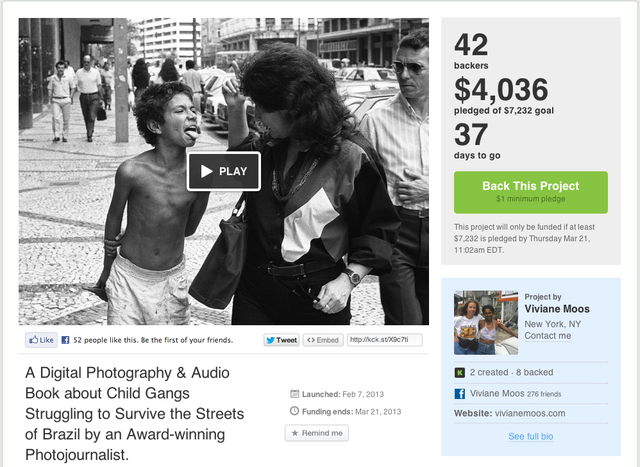
Image courtesy of Heinrich-Böll-Stiftung via Wikimedia Commons
5 tips on how to stand out in crowdfunding world
Guest post by Christopher Wallace
Amsterdam Printing
 Let’s go back in time five years to 2007. You’ve got a great idea to build a watch with built-in Bluetooth, allowing you to control and access your phone or tablet from your wrist. Unfortunately, you’re a relatively broke hobby designer working a 9 to 5 technology job.
Let’s go back in time five years to 2007. You’ve got a great idea to build a watch with built-in Bluetooth, allowing you to control and access your phone or tablet from your wrist. Unfortunately, you’re a relatively broke hobby designer working a 9 to 5 technology job.
How do you proceed? Call up your rich uncle and ask him to back you? Go to the bank and apply for a loan?
Five years ago, any method of raising capital for a project would generally require a substantial profit share once the product came to fruition.
That’s no longer the case.
Crowdfunding gains momentum
By now, most people with an Internet connection have at least heard of Kickstarter, the crowd-sourced fundraising site that began in 2008 (and is now joined by a host of other competitor platforms — see some of these Social fundraising tools for nonprofits & causes).
The Kickstarter concept is simple: a budding entrepreneur or artist creates a video explaining their idea for a product or project and posts it to the website (like Dan Cohen did). Nonprofits and causes cannot currently raise funds with Kickstarter though other sites, like Indiegogo and Crowdrise, help fill that void for cause organizations.

Users set a monetary goal they want to reach, with different tiers of donations and corresponding “rewards” to donors. If they reach their goal within the time frame they set, then all of the money goes into the bank account of the creator, minus a 5 percent fee to Kickstarter. In the event that they don’t reach their goal, none of the donors’ credit cards are charged.
Now, until about a year ago, Kickstarter was the domain of garage bands and starving artists. Need $5,000 to get into a recording studio? Make a video and hawk it to the Facebook accounts of all your friends and family.
Then along came the Pebble. With their campaign last spring, the creators of a watch that syncs with smartphones managed to raise over $10 million. When they began the campaign, they set a goal of $100,000.
What does this mean?
Well, if you’re Pebble, it means you’ll be making a lot more watches than you’d initially planned on, and although you’ll be paying Kickstarter a cool $500,000, you won’t ever have to pay off interest to the bank on a $10 million loan.
Revolutionizing the way entrepreneurs raise capital
In a matter of months, Kickstarter has revolutionized the way that entrepreneurs big and small raise capital. There’s no longer any reason to give a financial backer a cut of your profits.
If your idea is good enough, consumers will pay in advance (but you have to give them a deal).
If you’ve got your own idea or are just looking to raise capital for your business, here are the basic ideals of running a Kickstarter campaign to get you started:
Be transparent
1There’s no reason to hide the profits you stand to make. People who believe in your product want you to succeed, but mostly they just want your product at a discount.
Explain in your campaign why you’ve set your goal the figure you choose. What will that money go to? How much does it cost to make this happen?
Be professional
2Nobody is going to believe in your idea if you present it poorly. Whether you’re a comic book artist or a tech geek, it’s crucial that your video and presentation be top notch.
Borrow or hire a professional camera and find someone who knows how to edit video. Draw out a storyline for your video before filming. Show your face in the video. Dress nicely and smile.
Be simple
3Up until the Pebble, one of the most successful Kickstarter campaigns to date was the Hidden Radio, an intuitive speaker that wirelessly connects with tablets and phones and pumps out up to 80 decibels of sound, all in the size of a can of soda.
The speaker’s Kickstarter campaign raised $938,000, just shy of $1 million, after setting an initial goal of $125,000. Because the product was attractive and well-explained in simple, layman’s terms, people understood it and immediately wanted it.
In the four-minute videos, the creators explained only what needed to be said, nothing more. People bought it up in droves.
Be generous
4Kickstarter is not a chance to ask for a handout. Just because your project is great, if you’re not a registered nonprofit or social enterprise, think twice before plainly asking for free money.
Think of Kickstarter like a Groupon or daily deal – you’re asking people to pay in advance. Reward them with a significant discount over the price they’d pay if they waited until your product, album, or project is complete.
Be passionate
5Whether you’re a playwright or a video game designer, if you believe in your product, that will show in your campaign. Don’t put up a Kickstarter campaign for anything that you’re not prepared to give 100 percent of your efforts to.
The most successful campaigns turn into full-time jobs for the creators. Best of all, they begin their business without crippling debt.
What ideas do you have that might raise $1 million on Kickstarter?
The post How to raise $1 million on Kickstarter appeared first on Socialbrite.
]]>The post Crowdsourcing industry gathers at CrowdConf 2011 appeared first on Socialbrite.
]]>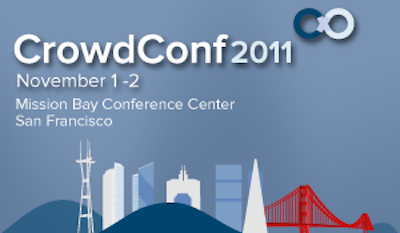
Learn about real-world applications — & get a discount
Guest post by Mollie Allick
Director of PR & events, CrowdFlower
On Nov. 1, CrowdFlower will be kicking off the second annual CrowdConf, the world’s largest crowdsourcing conference, at Mission Bay Conference Center in downtown San Francisco. This year’s conference will bring together more than 600 attendees to discuss innovations in crowdsourcing technology and trends taking place in the growing industry.
The main conference will be all day Wednesday, Nov 2. The agenda will focus on practical tips and tools for understanding crowdsourcing through a range of lenses including investing, philanthropy, community building, and creativity. The day includes keynotes, debates, and interactive breakout sessions, and will conclude with a networking poster reception.
Speakers include: Jeff Howe, author who coined the term “crowdsourcing”; Philip Rosedale, Founder of Second Life; Mark Gerson, Chairman of Gerson Lehrman Group; Charlie Cheever, Founder of Quora, Sharon Chiarella, vice president of Amazon Mechanical Turk; and more than 50 other incredible speakers representing the most influential and fastest-growing crowdsourcing companies. Check out the full list of speakers.
Additional learning opportunities
For those looking to learn more, be sure to join us one day prior to the main event on Nov. 1 for two great workshops that will focus more on research and industry-specific tutorials. Workshops offer conference attendees a head start as they engage in a more intimate exchange with other thought leaders and crowdsourcing experts. Workshops will be taught by: Omar Alonso, Technical lead on the Bing team at Microsoft; Matt Lease, assistant professor at the University of Texas; and David Alan Grier, columnist at IEEE Computer. Space is limited, so register now.
Discount for Socialbrite readers
Socialbrite readers can get a $75 discount by entering the code SCLBRTORG when registering.
Register at Eventbrite.
Event details:
What: CrowdConf 2011 – www.crowdconf.com
When: Workshops: Tuesday, Nov. 1 (10am-3pm); Conference: Wednesday, Nov. 2 (8:30am-6:30pm)
Where: Mission Bay Conference Center, 1675 Owens St., San Francisco
Cost: $75 for workshops, $450 for conference
Register: http://crowdconf2011.eventbrite.com/
 This work is licensed under a Creative Commons Attribution 3.0 Unported.
This work is licensed under a Creative Commons Attribution 3.0 Unported.
The post Crowdsourcing industry gathers at CrowdConf 2011 appeared first on Socialbrite.
]]>The post How CrowdFlower powers crowdsourced labor appeared first on Socialbrite.
]]>Target audience: Nonprofits, social enterprises, NGOs, foundations, businesses, educators. This is part two of a two-part series on crowdsourcing. Also see:
• How nonprofits can use crowdsourcing to work smarter and save money
 One of the most fascinating phenomena in the Web 2.0 world the past couple of years has been the rise of crowdsourcing.
One of the most fascinating phenomena in the Web 2.0 world the past couple of years has been the rise of crowdsourcing.
Crowdsourcing comes in a few different flavors (which part 1 covered yesterday). For nonprofits, social enterprises and businesses, the real potential for disruption comes when a global labor force applies itself to a crowdsourced project.
That’s where CrowdFlower comes in. Since my interview with founder-CEO Lukas Biewald at SXSW 15 months ago, the start-up has grown from 15 to 60 employees and is now headquartered in a spiffy second-floor space in San Francisco’s Mission District.
Mollie Allick, director of PR and events for CrowdFlower, talks about what crowdsourcing is and how nonprofits and other organizations can use the power of the crowd to advance their mission in this 4 1/2-minute interview at their offices. “We take large datasets and break them down into small tasks and distribute them to a labor force across the Internet,” she says.
Watch, embed or download the video on Vimeo
It’s not just about reducing costs. CrowdFlower was one of the partners in the collaborative mobile relief effort Mission 4636, which we wrote about following the Haiti earthquake last year. The short code emergency response communication system enabled earthquake victims in Haiti to get life-saving aid by sending a free mobile text message, which local volunteers translated as needed.
One important thing CrowdFlower brings to the party today is that they’re the organizers behind the biggest crowdsourcing gathering around: CrowdConf, to be held Nov. 1-2 at the Mission Bay Conference Center in San Francisco, geared to both industry and the academic sector. Last year’s event drew almost 500 people.
Crowdflower is also organizing smaller events in Washington, DC, New York, Boston and Austin, Texas. Other crowdsourcing events include ClickWorker, held June 15 in Berlin, and the Crowdsortium Symposium, held in May at Google.
Some of CrowdFlower’s nonprofit customers include the University of Southern California, the environmental media organization Dialogue Earth, Caring.com, a portal for aging parents, spouses and loved ones, Doximity, a mobile collaboration network for physicians, and the social good organization GVF, whose team has spent the last 10+ years developing a global system to prevent pandemics.
Keep your eye on crowdsourcing and see whether you might find a use for it in the months or years to come.
Related
• Helping Haitians via mobile, crowdsourcing & social media (Socialbrite)
• CrowdFlower: Toward a world of crowdsourced labor (Socialbrite, 2010)
• The Extraordinaries: Building the ‘micro-volunteering’ movement (Socialbrite)
• Harnessing the crowd for social good (Socialbrite)
• Is Crowdsourcing Really the Industry’s Dark Side? (Waxing Unlyrical)
 This work is licensed under a Creative Commons Attribution-NonCommercial 3.0 Unported.
This work is licensed under a Creative Commons Attribution-NonCommercial 3.0 Unported.
The post How CrowdFlower powers crowdsourced labor appeared first on Socialbrite.
]]>The post How nonprofits can use crowdsourcing to work smarter and save money appeared first on Socialbrite.
]]>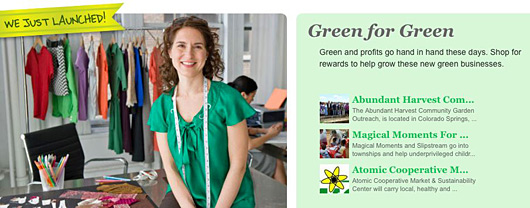
Greenfunder funds socially responsible projects and businesses.
Target audience: Nonprofits, social enterprises, NGOs, foundations, businesses, educators. This is part one of a two-part series on crowdsourcing.
By Lindsay Oberst
Socialbrite staff
 High-quality work at a low cost. That’s what crowdsourcing can achieve for nonprofts that wish to save money while pursuing their mission.
High-quality work at a low cost. That’s what crowdsourcing can achieve for nonprofts that wish to save money while pursuing their mission.
Crowdsourcing refers to harnessing the skills and enthusiasm of those outside an organization who are prepared to volunteer their time contributing content or skills and solving problems, sometimes for free, sometimes for a fee. An offshoot, crowd funding, describes the collective efforts to pool their money together on behalf of a cause, project or business. Kiva (loans to entrepreneurs), Crowdrise and Kickstarter (raise funds for creative projects) and Greenfunder, which launched in May as a site to raise funds for socially responsible projects and businesses, are among the burgeoning number of crowd funding sites. (See a few others in our roundup of 24 tools for fundraising with social media.)
Crowdsourcing, a bit of a catch-all term, can be used to gather information, solicit advice, save money or get stuff done. It can also help to inform decisions, demonstrate inclusiveness and bring a whole new meaning to collaboration.
We’ve seen the rise of community crowdsourcing with the advent of social media, but it’s always been part of the way society works. And nonprofits have always been at the forefront of crowdsourcing long before the term was coined in 2006. The idea simply fits in with the way small organizations work.
Here are a few quick, low-key ways crowdsourcing works
Say you’re a nonprofit looking to improve your services. You ask your Facebook fans and Twitter followers — people who have chosen to connect with you — how they think you can become better. They feel included in the process and want to answer, and then your organization has a solution to its problem. That’s what crowdsourcing can do — it can get a job done.

Or take blog posts. Studies show that people respond better to posts with images, so your organization seeks to include a photo along with the information you provide on your website. Where can you find images? Two good starts are Socialbrite’s Free Photos Directory and Flickr’s directory of Creative Commons photos, with 160 million photos available under various licenses. Both can be used to find free photos that you can use for your website, blog posts, reports, presentations and more — just give the photographers proper attribution.
Or maybe you’re wondering if your idea has been tried before — say, if someone has already learned lessons from running a fundraising campaign using Twitter? (Yes.)
Organizations are already using crowdfunding, crowd voting and crowdsourcing to gather information and improve the way they work. You’ll find that there are a handful of companies and services that offer crowdsourcing as their core business, such as CrowdFlower and Amazon’s Mechanical Turk, while other companies use crowdsourcing to deliver other services, such as Elance (a marketplace for freelance services), All Our Ideas (a platform for crowdsourced suggestions) and GeniusRocket (a logo and Web design service).
3 examples of nonprofits using crowdsourcing

Samasource
A number of nonprofits have taken the plunge and begun taking advantage of the new landscape. One of our favorites is Samasource, a nonprofit whose entire model is based on crowdsourcing dignified work to a workforce based in developing nations. Here are three other examples of nonprofits using crowdsourcing.
1All Our Ideas (“a suggestion box for the digital age”). This open source software is free to use and allows viewers to vote on ideas and add their own. Matthew Salganik, who created the project and works in the department of sociology at Princeton University, says it “allows the best ideas to bubble to the top.”
Catholic Relief Services, a nonprofit, is the official international humanitarian agency of the Catholic community in the United States. They wanted to evaluate all the workers in each of their offices around the world. All Our Ideas gave them an internal platform to source ideas from their workers, the people who know best about how everything works.
This idea platform is not limited to nonprofits or work evaluation. Others using it include the New York City Mayor’s Office and The Washington Post, which used it to increase reader participation.
2GeniusRocket (“the first curated crowdsourcing company”). According to GeniusRocket president Peter LaMotte, two forms of popular creative crowdsourcing exist. The first is what 99Designs offers. They outsource logo and Web design services to the public.
The second is what he calls “curated crowdsourcing.” His company creates solutions using vetted professionals and everything is kept private. They began using the first method and then realized some nonprofits didn’t want their messages blasted across the Internet, nor did they want to sort through hundreds of submissions.
“We make it a lot more affordable for nonprofits to source creative marketing content, yet we have a professional community,” LaMotte said.
Nonprofits use GeniusRocket primarily for the creation of videos and customizable content.
3Spot.us. “Community-funded reporting” is the tagline of this crowdsourcing service. United Roots, an Oakland-based nonprofit that uses music to help kids heal and learn entrepreneurial skills, is one example of how crowdsourced reporting can be used to create community-based coverage. Five of their stories were funded through Stories for Good and Spot.us.
For other similar services, see this answer on Quora. The Techsoup.org blog also has some good examples of nonprofits using crowdsourcing services.
As you can see, the possibilities of crowdsourcing are extensive. It still has limits, and it may not be the best solution for every nonprofit or organization, but it’s worth considering in the right circumstances.
Want more crowdsourcing?
- We recently showed our readers on way to crowdsource web design on the cheap.
- Our earlier article about 15 ways to crowdfund a project.
Coming Thursday: Look for our interview with Mollie Allick of CrowdFlower.
Related
• Samasource enables socially responsible outsourcing (Socialbrite)
• Tap into the collective power of your community (Socialbrite)
• Crowdsourcing a presentation at SXSW (Wiser Earth Blog)
• Social good crowdsourcing (Mashable)
• An app to support refugees working in Africa (Socialbrite)
• 10 kickass crowdsourcing sites for your business (Econsultancy)
• 6 Great Crowdsourcing Sites For Freelancers (Sitepoint)
• Crowdfunding: Investment for Good (Care2)
 This work is licensed under a Creative Commons Attribution 3.0 Unported.
This work is licensed under a Creative Commons Attribution 3.0 Unported.
The post How nonprofits can use crowdsourcing to work smarter and save money appeared first on Socialbrite.
]]>The post Expert Web design on the cheap appeared first on Socialbrite.
]]>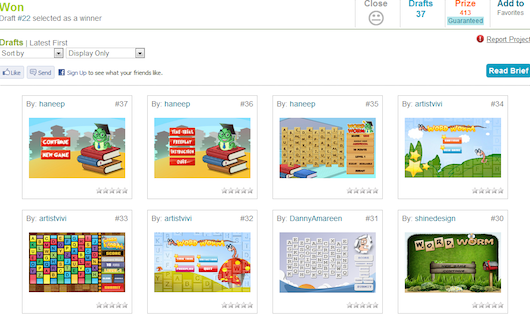
MycroBurst offers readers special discount to try out service
Target audience: Nonprofits, social enterprises, foundations, NGOs, cause organizations, startups.
 When I was at BlogWorld Expo in New York earlier this month, I spent quite a bit of time walking around the exhibit hall.
When I was at BlogWorld Expo in New York earlier this month, I spent quite a bit of time walking around the exhibit hall.
One of the companies I came across was MycroBurst, a marketplace that helps you crowdsource any kind of design – website, logo, stationery, T-shirt, you name it, there’s a community of designers signed up there to vie for the honor of creating your project. Similar crowdsourcing communities include crowdSPRING and 99designs (website and logo designs), uTest(software testing) and Amazon’s Mechanical Turk (data entry and verification).
Special offer for Socialbrite readers
The MycroBurst team gave me a discount code to give out as a special offer, which waives the standard $19 set-up fee for anyone who uses it. So, in essence, you can post a free project (you’ll still have to decide on the amount of your prize money, etc.) and probably get some great designs to help you along. If you’d like to take advantage this special offer, just plunk in the code B222 when you post your project.
if you have any trouble, please let me know. The code is valid through July 17, which gives you a few weeks to get a new project going.
How MycroBurst works
First, you select what kind of project you want crowdsourced and post the details along with how much of a “prize” you’re offering. MycroBurst suggests $149 as a good starting point, but if you offer a higher prize, you’re likely to get more entries. Once you’ve posted your project, a contest starts among the designers on the site to present their best idea (see examples in the main image above).
 Throughout the project, you can review the entries, give feedback and then at the end of the contest select your favorite as the winner. Give the designer his or her prize money, and you’re done – probably for far less than you’d pay otherwise.
Throughout the project, you can review the entries, give feedback and then at the end of the contest select your favorite as the winner. Give the designer his or her prize money, and you’re done – probably for far less than you’d pay otherwise.
There is typically a $19 set-up fee for MycroBurst to run your contest, along with a 7.5% credit card processing fee and various options for you to select from in terms of promoting it. You can head over to the MycroBurst site to learn more about the details. I’ve seen other crowdsourcing design sites, and I really like the way this one works. No doubt the fact that Joe Witte, one of the people behind MycroBurst, took some time to talk to me and give me a demo made a difference.
Here is some other information about the site that may be helpful:
- There are currently an average of 104 concepts per project posted. A project typically lasts 7 days, unless for some reason you need to extend it.
- MycroBurst is so confident in its model that they offer money back guarantees if a logo project doesn’t get at least 30 concepts. Think about that – 30 concepts in one week – that’s a pretty promising outcome.
- 80% of MycroBurst clients gave them a “9” or a “10” when asked if they would refer the firm to a friend or colleague (metric based on the “Ultimate Question” book by Fred Reichheld, and his “Net Promoter” question).
How to make your MycroBurst project successful
- Give good feedback to the community during the project, and give star ratings.
- Invite designers (not just the top designers, they get tons of invitations) to participate in your projects.
- Make your project guaranteed — that means someone will definitely win the prize — since it will result in 70% more concepts.
I’ve been thinking about doing not only a blog redesign but also a website redesign and MycroBurst might be just the thing for me. I don’t have a huge budget, and I’m smart enough to know that I shouldn’t try to design something myself. I’m great with concept, but the technical execution not so much.
Happy MycroBursting!
Tell us: Have you used a crowdsourcing service? Did it work for you?
 This work is licensed under a Creative Commons Attribution-NonCommercial-ShareAlike 3.0 Unported.
This work is licensed under a Creative Commons Attribution-NonCommercial-ShareAlike 3.0 Unported.
The post Expert Web design on the cheap appeared first on Socialbrite.
]]>